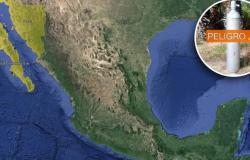The World Bank issued a harsh warning by reporting that, in 2023the amount of gas burned worldwide increased by 9 billion cubic meters reaching 148 billion cubic meters, its highest level since 2019. This is equivalent to 23 million additional tons of carbon dioxide emissions. According to the World Bank’s Global Methane Flaring and Reduction Partnership (GFMR), this is an amount similar to what five million cars on the roads would produce.
Demetrios Papathanasiou, Global Director of the World Bank’s Energy and Extractives Global Practice, said: “Millions of people still lack access to basic energy and greenhouse gas emissions continue to rise, while huge volumes continue to be wastedly burned every year. Of gas”. Furthermore, he adds“capturing and utilizing this wasted gas could displace dirtier energy sources, reduce greenhouse gas emissions and generate enough energy to double the amount of electricity supplied in sub-Saharan Africa.”
For his part, the World Bank’s GFMR manager, Zubin Bamji, assured that “The increase in gas flaring is particularly discouraging, as it comes after a much-anticipated reduction in 2022. This brings global gas flaring levels back to what we experienced in 2019. We are hopeful that this is something of an anomaly and, in the longer term, “the trend will be dramatic reductions.”
According to the studies, burning gas releases harmful pollutantsincluding black carbon and unburned methane, which contribute to climate change and pose risks to both people and the planet. In this sense, 381 million tons of carbon dioxide per year could be released from the atmosphere if gas flaring were eliminated.
However, the organization states that wasted flared gas can be used productively to help displace unsustainable energy sources, increase energy access in some of the world’s poorest countries and provide many countries with much-needed energy security.
Estimates of global gas flaring are based on observations from a satellite launched in 2012 operated by the US National Oceanic and Atmospheric Service. For its part, the World Bank’s GFMR provides grants, assistance and advice on regulatory and policy reforms to strengthen environmental institutions for governments and businesses to deploy flaring and pollutant reduction solutions.






